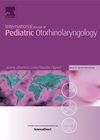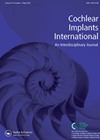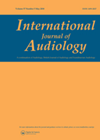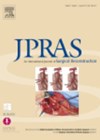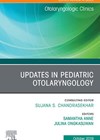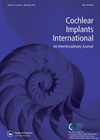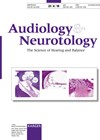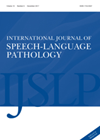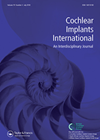
Journal Reviews
Identification of congenital hearing loss in Saudi Arabia
It has long been recognised that timely recognition of congenital hearing loss allows for the morbidity of hearing loss to be minimised. Due to the difficulties with identifying hearing loss in babies, combined with readily available screening technologies, many countries...
Which cross-over frequency is best for electro-acoustic stimulation?
Advances in technology and improved soft surgical techniques have led to individuals with better hearing thresholds, especially at the low frequencies, becoming candidates for cochlear implants (CI). Surgeons are more confident that residual hearing can be preserved thus making those...
Cochlear implants and speech perception
Cochlear implants can be an effective treatment for specific hearing losses. They may often be the only way to restore hearing for profoundly deaf people. Therefore, it is very important to understand all processes that may influence effective fitting of...
Facial palsy: What do patients and healthcare care about?
The article describes the process for establishing a collaborative research agenda to address gaps in understanding of the diagnosis, treatment management of facial palsy. A Delphi technique was used in order to establish a facial palsy research agenda. In round...
Understanding osseointegration for the otologist
Bone conduction implants are hearing devices that require osseointegration to create a stable and reliable interface between the hearing device and the skull to deliver sound to the cochlea. This article reviews the physiology of osseointegration, factors that may lead...
Auditory deprivation and single-sided deafness
In cases of bilateral auditory deprivation, there is clear evidence of an inverse relationship between performance after cochlear implantation and the length of severe to profound deafness prior to implantation (i.e. the longer the deprivation the poorer the outcome on...
Listening effort and speech perception performance
Capturing speech perception performance in noisy listening environments is a key part in validating any hearing instrument. Traditionally audiologists have always measured this performance in noisy environments by looking at thresholds, i.e. speech reception thresholds or signal to noise ratios....
Round window niche drilling with intratympanic for ISSHL. A new option for salvage?
This paper from China compares the technique of widening the round window via a posterior tympanotomy approach and steroid-soaked gelatin sponge with intratympanic steroids alone for salvage therapy in severe idiopathic sensorineural hearing loss. Salvage therapy was defined as patients...
Does talking better make you feel better?
Interaction-focused therapy for people with language impairment (aphasia) following a stroke or brain injury is routinely used by speech and language therapists in clinical practice. These types of interventions are based on research into the organisation of interactions and interactional...
Cochlear implantation in children with congenital long QT syndrome
Jervell and Lange-Neilsen syndrome is a condition where sensorineural deafness coincides with inherited abnormalities of the heart, resulting in prolonged ventricular repolarisation, frequently shown on an ECG with a prolonged QT interval. These children can present at implant centres for...
Inter-aural hearing preservation in cochlear implantation
Hearing preservation during cochlear implantation is becoming increasingly important, although results can be unpredictable. NICE are in the process of updating their guidance in the UK and it is possible that those with better hearing than the current candidates will...
The DOSO outcome measure
The subjective outcome measures are a crucial element of the auditory rehabilitation process for hearing aid fitting. Authors hypothesised that normative data used for the device-orientated subjective outcome (DOSO) were no longer valid for new hearing aids technologies (2015-era technologies)....

